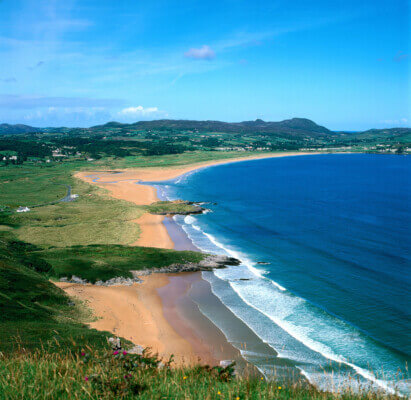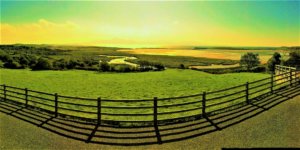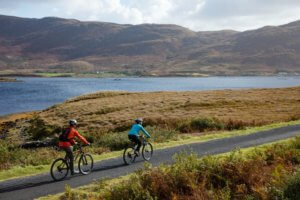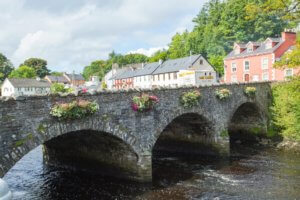For years, it seemed like Donegal was Ireland’s forgotten county.
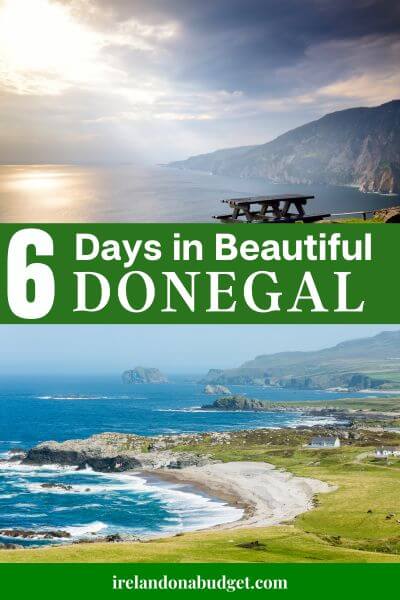 This post and page contain affiliate links and I may earn compensation when you click on the links at no additional cost to you.
This post and page contain affiliate links and I may earn compensation when you click on the links at no additional cost to you.
But that's all changing with more and more tourists discovering this beautiful part of Ireland.
If you're curious, here's an itinerary that gives you some ideas on how you could spend six days in Donegal.
Located in the northwestern corner of Ireland, Donegal is actually part of the province of Ulster but at the same time part of the Republic of Ireland.
The greater portion of its land border is shared with three counties in Northern Ireland.
They include Derry, Fermanagh, and Tyrone. Only a small portion of its border is shared with County Leitrim, which is in the Republic of Ireland.
Many say that its geographic isolation from the rest of Ireland has led to a cultural identity that is distinct from other counties in the South.
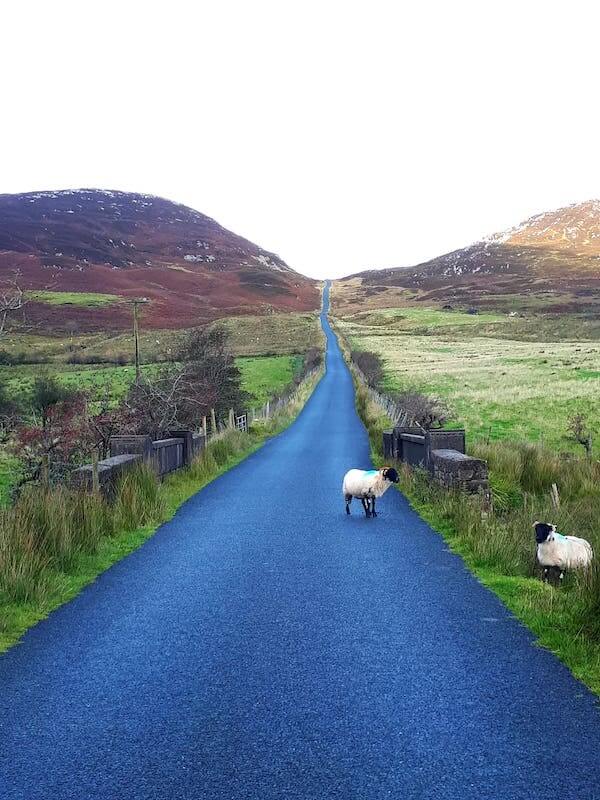
Maybe that’s why Donegal took on the motto, “Up here it’s different.”
Historically, the lack of a working railway system isolated Donegal from the rest of Ireland.
The county had, at one time, a rather efficient narrow-gauge railway system that ran for 225 miles, connecting the towns of Burtonport, Glenties, and Letterkenny in the west, as well as Ballyshannon and Killybegs in the south.
On the Inishowen peninsula (Ireland’s largest peninsula that includes the country’s most northerly point, Malin Head), a railway line even extended as far as Carndonagh.
For a long time, the railroad in County Donegal served a real purpose, but by the mid-20th century, it was on the decline.
By 1960, the last of Donegal’s railway system had been closed down.
Today, visitors to the county can learn about the railway system at the Donegal Heritage Centre.
Getting to Donegal
On your six days in Donegal, you'll find a land of unspoiled beaches, shimmering lakes, towering cliffs, and remote mountain passes.
Its long, craggy coastline is defined by its remote and beautiful peninsulas, not to mention its spectacular offshore islands where you’ll find more evidence of the area’s rich heritage.
Did you know that National Geographic Traveler named Donegal the coolest place on the planet in 2017?
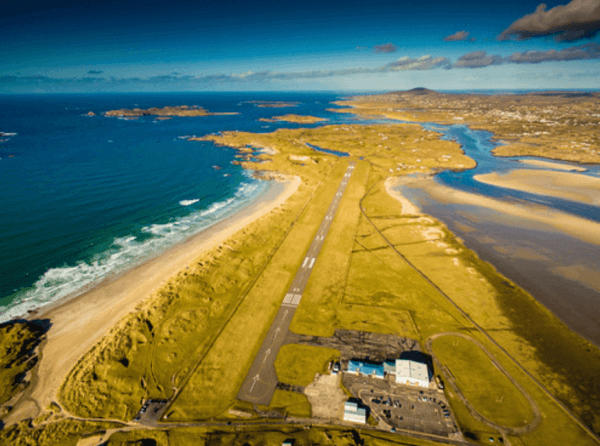
While trains no longer crisscross the county, all parts of Donegal are very accessible by car.
If you don’t want to make the 2 ½-hour drive from Dublin, you could instead fly to Donegal Airport and rent a car there. Fares from Dublin to Donegal cost approximately €80 on Aer Lingus.
Located in Carrickfinn, Kincasslagh, an area of West Donegal that is an Irish-speaking region, this beautifully-situated airport has received the “Most Scenic Approach” award for two years in a row, part of a survey conducted by the private jet booking service, PrivateFly.
Enterprise Rent-a-Car is located within the airport.
As with driving anywhere in Ireland, especially on smaller roads, use caution.
If you are driving from Dublin to begin your six days in Donegal, the journey will take you approximately 2 hours and 50 minutes.
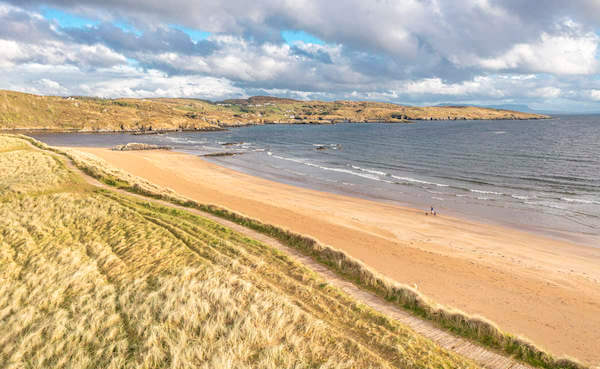
The drive from Belfast is approximately 2 hours and 26 minutes.
All of the coastal regions of County Donegal are on the Wild Atlantic Way, a 1,500-mile scenic driving route that begins in Malin Head and ends in Cork.
Accommodation in Donegal
You can choose from self-catering accommodation, B&Bs or Airbnbs. There are also quite a few glamping sites throughout the county.
Ireland is known for its hospitality and that’s nowhere more evident than in the thousands of B&Bs located across the country.
Donegal is no different.
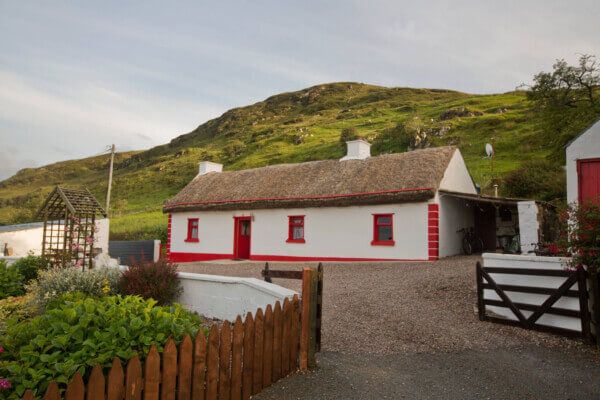
If you choose to stay in various B&Bs during your six-day journey of Donegal, you’ll be pretty much guaranteed top-class service, including a warm Irish welcome, delicious home-cooked food, and the in-depth knowledge that only a local person, like a B&B owner, will know.
Day One: Sliabh League Cliffs
While the Cliffs of Moher in County Clare are better known among tourists, the Sliabh League Cliffs (pronounced “Schlieve”) are in fact three times higher.
This Donegal landmark stands close to 2,000 feet above the ocean, making it the second-highest highest cliffs in Europe, after the Croaghan cliffs on Achill Island.
From the top, you’ll get magnificent views of the surrounding area, including Donegal Bay and neighboring County Sligo in the distance.
If you’re scared of heights, the safest place to take in the magnificent view is from the Bunglass Viewing Platform (close to the Slieve League Visitor Center).
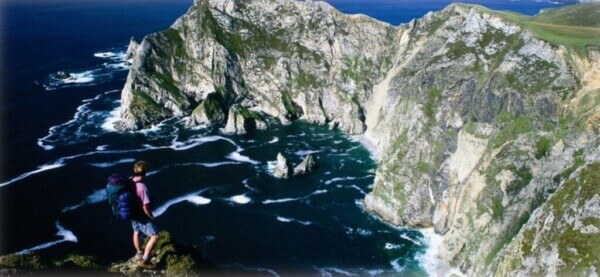
Of course, you can take the path that leads from there up the cliffs for a more magnificent view. For the more adventurous, the One Man’s Pass or the Pilgrim’s Path, both of which take you to the summit, are worth the effort.
A 3 ½-hour tour of rural southwest Donegal that includes a hike of Sliabh League is also an option if you prefer guided tours. The Hidden Gems on the Edge tour leaves from the Killybegs Information Centre.
The cost is €50 per person. Book the tour by emailing [email protected] or by calling 011-353-74-973-2346.
No doubt you’ll be ravenous after your adventure. Kitty Kelly’s restaurant, located in Killybegs, is known for its great seafood is housed in a 200-year-old farmhouse.
It has received TripAdvisor’s Certificate of Excellence for the past three years in a row.
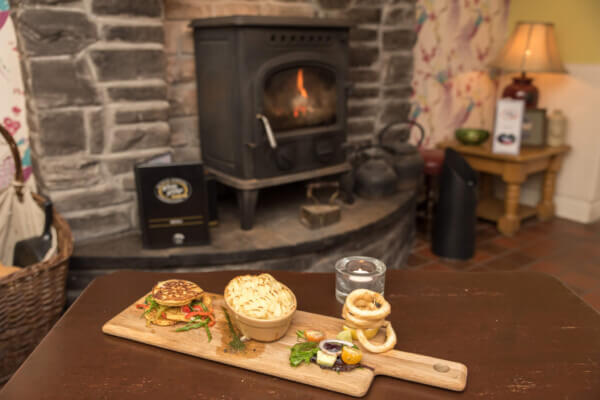
The restaurant uses locally sourced produce as well as an abundance of fresh fish caught nearby.
Day Two: Glengesh Pass, Glencolumcille, Maghera Strand
Beyond the Sliabh League cliffs, you’ll find a very peaceful place called Glencolmcille.
It’s an area rich in ancient history, with the remains of dwellings and tombs dating back to the Megalithic period, as well as stones from early Christian Ireland.
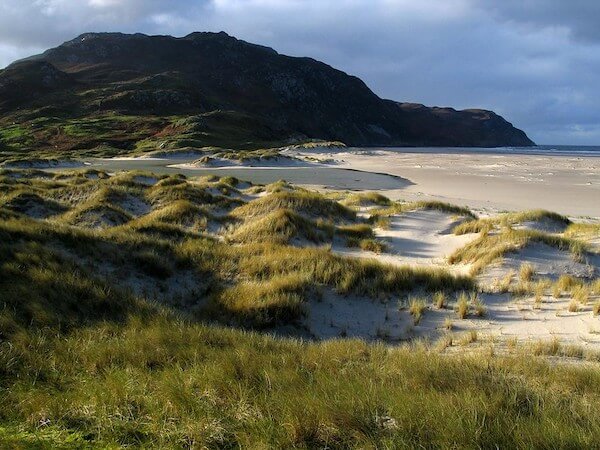
There are two designated walking loops in this area that are part of Ireland’s national walks network.
They include the Drum Loop and the Tower Loop. On the Drum Loop, you’ll pass the 5,000-year-old Mannernamortee megalithic tomb, as well as cross-inscribed pillars.
Visitors taking the Glen Loop will pass the Martello Watch Tower and eventually reach the deserted fishing villages of Port and Glenlough.
In 1935, Welsh poet and writer Dylan Thomas stayed in a cottage outside of the village, the ruins of which can be seen today.
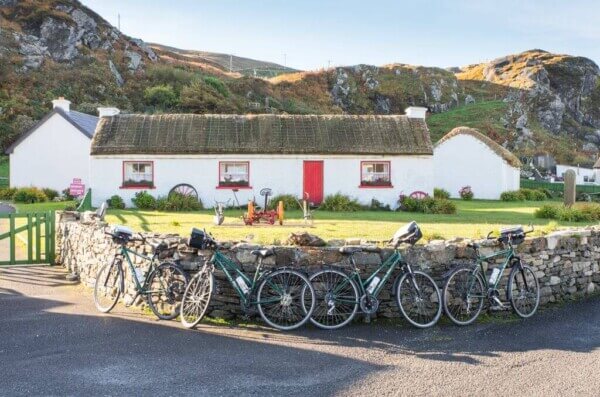
Each cottage in the Glencolmcille Folk Village is an exact replica of a dwelling used by the local people in the 18th, 19th, and 20th centuries.
They are equipped with furniture, artifacts, and utensils of the period. A reconstructed schoolhouse, a fisherman’s house, as well a pub-grocery shop are also part of the attraction.
The folk village is open from Easter through Oct. 31st. Admission is €6 for adults, €5 for seniors and students, €2.50 for children over 7, and €5.50 per person in groups of 11 and over. Children under 7 are free. Admission for a family of four is €15.
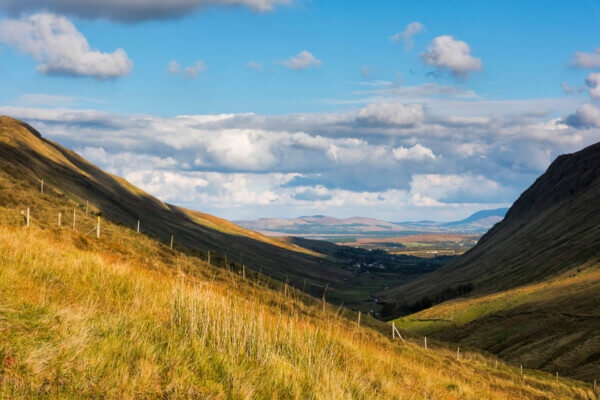
Leaving Glencolmcille on your six-day journey of Donegal, you can take the R230 to Ardara through the Glengesh Pass, the heart of Donegal’s tweed and knitwear industry.
It is about a 15-mile drive to Ardara on a single-lane road, about 35-40 minutes. Take time to soak up the natural beauty of this area by stopping often to take photos.
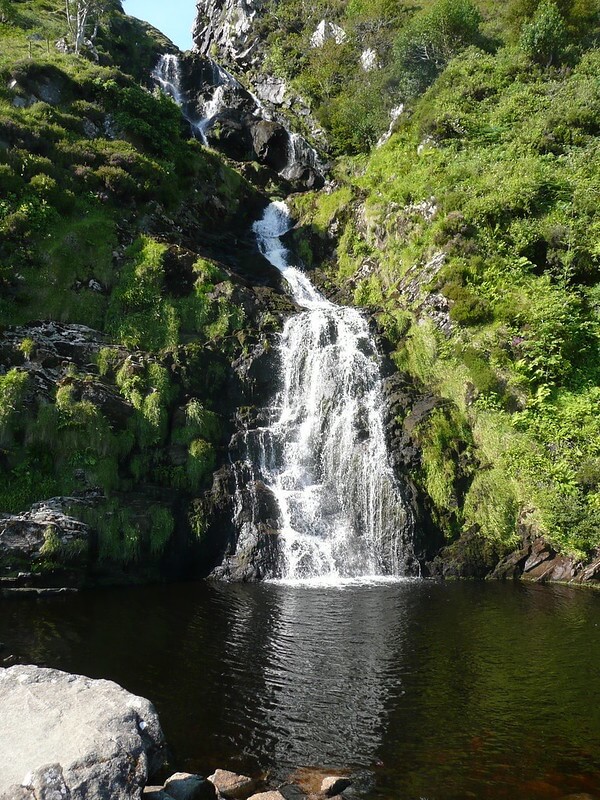
As you near the end of this route, you’ll see a sign for the Assaranca Waterfall. Be sure to visit. Finally, heading south from Ardara will bring you to Maghera Strand, one of Ireland’s most beautiful beaches.
To round off the day, stop off at Nancy’s Bar in Ardara, a classic Irish pub that’s been in the same family for seven generations. The pub serves great seafood and chowder and is the best place in town for a pint.
Day Three: Poisoned Glen, Glenveagh Castle, Glenveagh National Park
Before getting to the Poisoned Glen, you’ll likely stop in the hamlet of Dunlewey located in an area known as Gweedore.
This is primarily an Irish-speaking area at the foot of Mount Errigal and on the shore of Dunlewey Lough. The main attraction is the Poisoned Glen, which takes its name from a feud between an evil giant and an ancient Irish god.

The now ruined Dunlewey Church of Ireland stands at the center of this magnificent valley. It was built as a memorial to James Russell, the landlord of the Dunlewey estate.
Here’s a bird's-eye view of this spectacular place.
Donegal’s Glenveagh National Park, which is Ireland’s largest national park, covers a total of 40,000 square miles of mountains, lakes, and natural woodlands. It can be found in the heart of the Derryveagh Mountains.
The park includes Glenveagh Castle, a castellated 19th-century mansion, as well as the castle’s Victorian gardens.
Modeled after Balmoral Castle in Scotland (the British royal family’s summer residence), it once served as a summer retreat for John George Adair and his wife, Cornelia.
Adair became infamous for evicting 244 of his own tenants in what later became known as the “Derryveagh Evictions.”
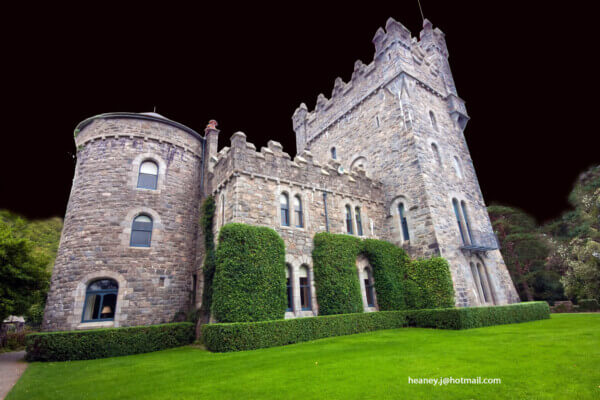
The interior of the house is beautiful, decorated in a flamboyant style. Greta Garbo once visited the castle and requested to be put up in the castle’s pink candy-striped room.
Entry to the park is free. To get a real appreciation for its beauty, drive around the lakes on the R251 and R254. To get to the house, you will need to take a minibus from the visitor center. No cars are allowed in the vicinity of the house.
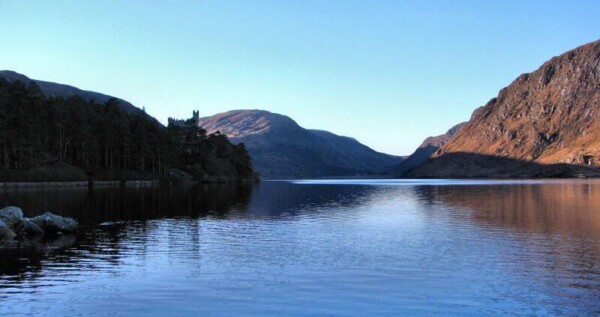
If you want to cycle around the park, you can rent an electric or hybrid bike from a local company called Grass Routes.
You can rent a bike for three hours. The cost includes €20 for an e-bike, €15 for a hybrid bike, €5 for a child's rental bike, and €25 for a tandem.
The rental company is located in the main parking lot from 10 a.m. to 5 p.m. Rentals are available from mid-June through September.
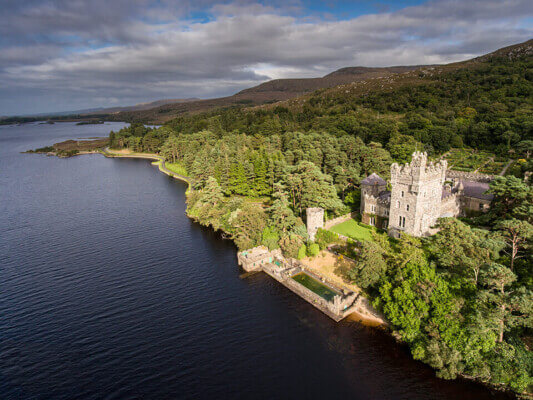
Glenveagh Castle is open from March through October for guided tours. Admission for adults is €7 and €5 for seniors, students with valid IDs, as well as children over 6.
The Glenveagh Castle Tearoom has received excellent reviews on TripAdvisor, as well as Leo’s Tavern, which is also a Certificate of Excellence winner.
The castle tearoom, located in the courtyard of the castle, serves up soups, sandwiches, scones, cakes, and different types of bread. It is open each day (10 a.m. to 5:30 p.m. from March 1st through Oct. 31st).
Leo’s Tavern is best known as the home of the traditional Irish group, Clannad, and their sister, Enya.
Day Four: Dunfanaghy Workhouse, Horn Head, Tramore Beach
If you want to know what life was like for local people during the Great Famine, then a visit to the Dunfanaghy Workhouse is a must on your six-day tour of Donegal.
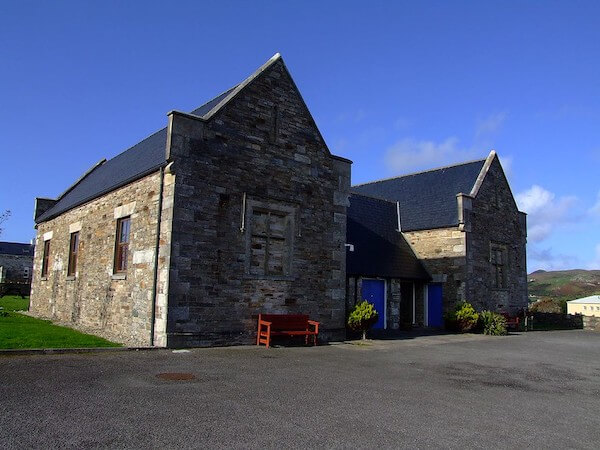
The building that stands today is a heritage center that tells the story of a young girl called “Wee Hannah” Herrity, who lived in the workhouse.
Admission is free to the workhouse, which is open from February through November.
There are plenty of walks to take in the Dunfanaghy area.
They include the Horn Head walk, where you’ll pass the now ruined signal tower that was used by the British during the Napoleonic Wars, the Muckish Railway Walk that will take you through an area so desolate you probably won’t run into anyone for miles, and the Famine Graveyard Walk, which leads to Wee Hannah’s final resting place.
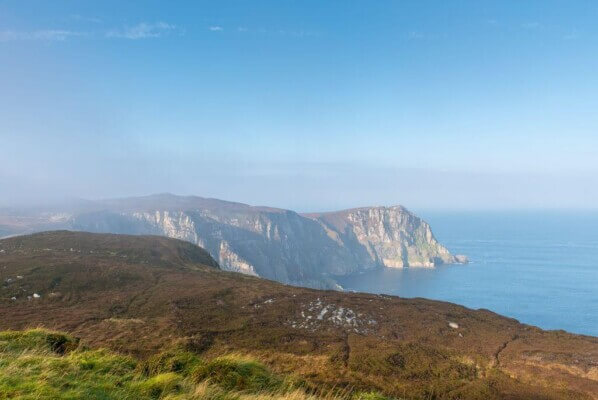
Driving in this region is equally satisfying, providing you with awe-inspiring views of Donegal’s many islands, Malin Head, the Rosquil Peninsula, and even Scotland.
If you can imagine yourself galloping the 2-mile stretch of Tramore Beach on a horse, then you’ll need to give Dunfanaghy Stables a call.
The well-known riding school provides short rides for children and adults, as well as longer trail riding and horse-riding sessions.
Adult rides cost €35 per hour and children under 18 are €30 per hour. Half-hour lessons for children are €15 and €20 for adults.
After a lot of walking and exploring, you’ll be ready to dive into some great local food. The Cove restaurant in Dunfanaghy is a great choice.
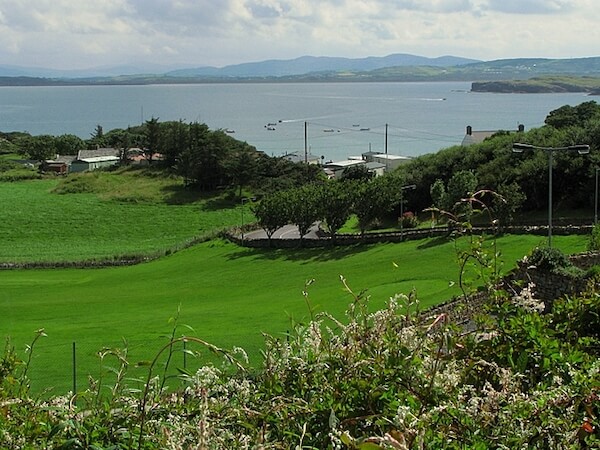
This bistro-style restaurant overlooking Sheephead Bay has an eclectic menu that includes black pudding potato cakes for starters, among a whole host of other choices.
Some of its main courses include Hand Dived Donegal Scallops, McCarren’s Belly of Pork, and Donegal Lamb Filet.
Get Wifi in Ireland with Wifi Candy – take 10% off with code IOB2024
Day Five: Fanad Peninsula (Fanad Head and Portsalon)
Fanad Peninsula is the second most northerly point in Donegal and a must-see on your six-day trip of Donegal. It’s the kind of region where you’ll definitely need a car to see the spectacular sights.
Fanad Lighthouse is one of the main attractions in the region. It was built in 1817 and today serves as the primary safeguard for ships sailing in the North Atlantic.
The lighthouse was at one time manned by a principal keeper and an assistant keeper, both of whom lived in the lighthouse with their families. Today, a caretaker is in charge of the lighthouse
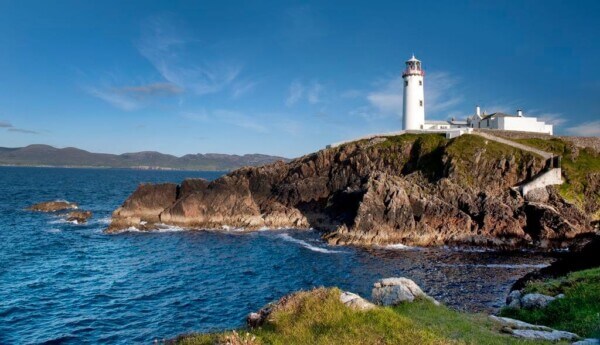
Tours of the lighthouse are available year-round
Adult admission is €13 (which includes a tour of the tower), students with an ID €10, children ages 5-17 €6.60 (they must be 1.2 meters/3.93 feet), and a family of 5 is €32.50. Children under 5 are free.
Ten minutes away from the lighthouse is the beautiful beach at Portsalon, known as Ballymastocker Beach.
The Portsalon Golf Club hugs the coast here, with the beach well in view. The green fees are €125. You can even stop by the club’s restaurant for lunch or an evening meal and take in the fabulous views while you’re at it!
Save on a Vacation to Ireland with Aer Lingus Vacations – Special Offers
Day Six: The Inishowen Peninsula (Malin Head)
Malin Head is the most northerly point in Ireland and while the drive there takes some time, it is well worth the wait.
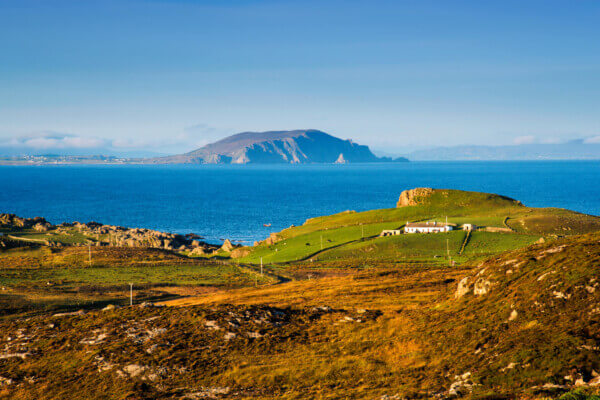
The northern-most tip in Malin Head is called Banba’s Crown, a 19th-century clifftop tower that was built by the British Admiralty and later used as a Lloyds signal station, which served as an important link in delivering news from Europe to the U.S.
From the clifftop, you can see Inishtrahull Island and its almost 200-year-old lighthouse.
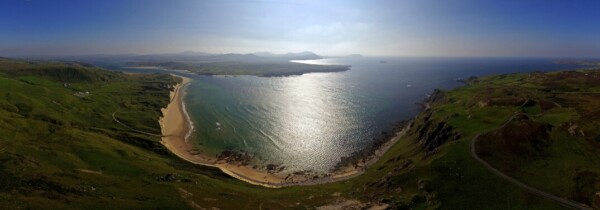
The largest sand dunes in Europe can be found at the Five Finger Strand nearby. At low tide, visitors often try to spot the wreckage, Twilight, which sank off the shore in 1889 while making its way to nearby Derry.
If you’re in the mood for a cliff walk, check out Hell’s Hole, a subterranean cavern 250 feet long and 8 feet wide, where the tide rushes in with a mighty force. Nearby you’ll find the Devil’s Bridge, a natural arch.
If you’re feeling peckish, the charming three-wheeled coffee wagon, known as Caffe Banba, is an excellent choice.
Barista-style coffee is their specialty, but you can get so much more than that, including hot chocolate and an array of delicious treats.
Have you visited Donegal? Let me know in the comments below.

